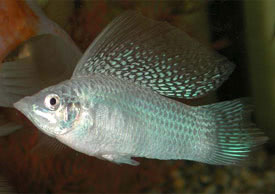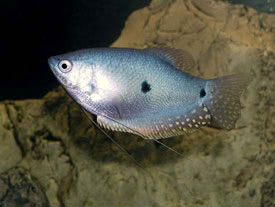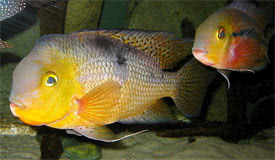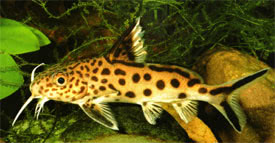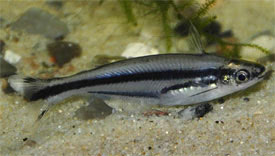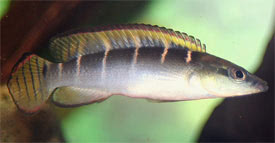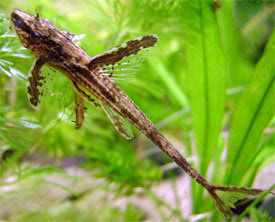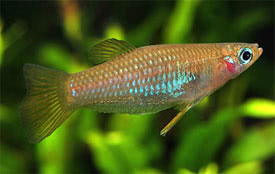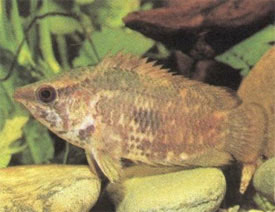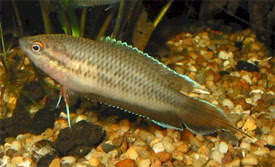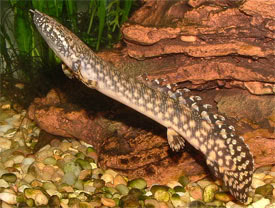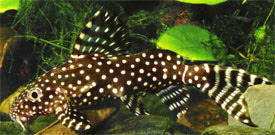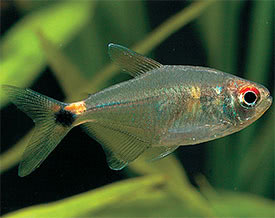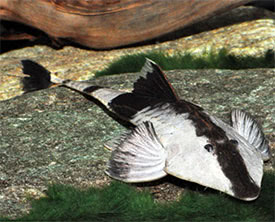
 Magyarul / Hungarian
Magyarul / Hungarian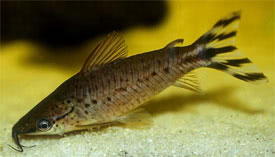
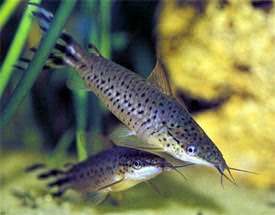
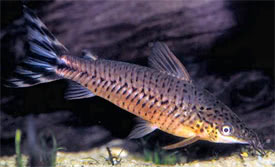
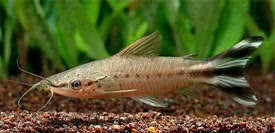
- Scientific name: Dianema urostriatum
- Synonyms: Decapogon urostriatum
- Common name: Flag-Tailed Catfish, Flagtail Catfish, Flagtail Porthole Catfish
- Group: Catfishes
- Habitat: South America; Brazil, Amazon basin
- Size: 12,5 cm
- Biotope: Inhabits in slower moving creeks, tributaries, floodplain lakes and ponds.
- Social behavior: Very peaceful schooling catfish and will do well in a community aquarium. Don’t keep with large or agressive fish.
- Diet: Omnivorous; Frozen and live foods such as bloodworm, chopped earthworm and brineshrimp. Flake foods are also accepted.
- Breeding: Hard
- Tank: Minimum 80 litres
- Population: 4-6 fish for 140 litres
- Decoration: Use river sand or fine gravel as substrate. Decorate the tank with driftwood or twisted grape roots. A few dried leaves are essential if we want to mimic their natural habitat. Use dim lighting. Heavily-planted tanks are particularly suitable.
- Temperature: 25-28 °C
- pH: 6-8
- Hardness: 5-20 NK°
- Lifespan: 5-8 years
Description: In body shape the Flagtail Catfish looks like an elongated Corydoras with quite large eyes placed laterally. The base color of head and body is grey or brown. The upper part of the body covered with small black spots, which can vary in number. The lower part is silvery. Caudal fin is deeply forked and marked with black and white alternating horizontal stripes.
The first few pectoral fin rays are thickened in males, while females are more heavily bodied. Breeding is possible, but only a few, conflicting information available about their breeding. Some breeding reports say that this species is a bubblenest builder, others say they lay eggs in a pit which excavated in the substrate or attached to floating cover. For breeding use a small group of fish (4-6 fish), and condition them with large amounts of live foods, and do some large cool water changes. Once eggs are noticed, the adults should be removed, as they may eat them. If you're having trouble inducing a spawn, try to lower the water level in the tank, increase the hardness of the water, increase the temperature by a few degrees and starve the fish for a few weeks to simulate the dry season in their natural habitat. After a few weeks, increase the water level using cooler, soft water and feed the fish with live foods. The wet season occurs between September and April in South America, and this can also affect the breeding.





